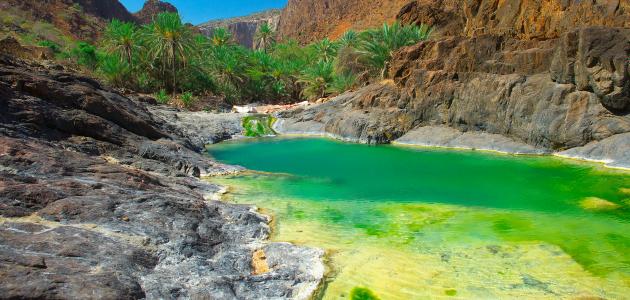Socotra

Socotra Island
A continental island, separated from the Arabian Peninsula and the Prehistoric African continent, developed as a small continent, the island of Socotra is located in the Arabian Sea and its southern coast is constantly facing strong waves from the Indian Ocean, and the city of Hadibo, located on the northern coast of the island, is its capital and largest city, and it is worth noting here that the name "Socotra" returns to Sanskrit and means the island of bliss or bliss.
Geography Of Socotra Island
Located 340 km southeast of Yemen, 700 km southeast of Aden, the north-western Indian Ocean island of Socotra, 225 km from the Horn of Africa, with an area of approximately 3,600 km, is the largest island in the eastern Horn of Africa and together forms the so-called Socotra Archipelago, which is located near the Gulf of Aden and consists of four main islands, namely : Socotra, Abdul Kuri, Seheh, Darsa, and a number of other small islands.
The Socotra archipelago is of global importance because of its biodiversity, which is represented by rare plants and animals; Wild snails, the archipelago features many endangered wild and marine birds, as well as various marine animals, and the island has about 900 endemic plant species, such as the adage trees or the so-called dragon blood trees. Patience trees, among others, total about 307 species, which led to the classification of the archipelago as a UNESCO World Heritage Site in 2008.
The island is made up of ancient fiery rocks as well as mutant rocks, where there are many granite rocks, as its geological composition is no different from that of the Arabian Peninsula, and the terrain of the island includes mountains, plateaus, plains, valleys and bays, and is mediated by a group of mountains called the Hajjar Mountains with a height of about 1500 meters on the eastern side of it, The central region is also about 500 metres high, the island has a tropical desert climate, seasonal rains rise in winter, especially in the high interior, while it decreases along the low coastal area, strong monsoons blow and sea levels rise in a specific season.
Socotra Island Demographic
Socotra has a population of about 100,000, and in 1966 the population reached about 16,000, reaching 30,000 in 1973, In 1994, the results of the population census carried out by a republic estimated at 44,880 people, an increase of up to 21,000 in 21 years, are not a burden on the island, The island's geo-geologic components encourage decision makers on the island to allow migration to open industrial facilities or to invest, and Socotra Island is characterized by population diversity, with populations of Arab, Somali and Greek origins, as well as South Asia.
Most of the inhabitants of Socotra island speak the socotra language. It is a sublime language that has not been written, a language associated with modern Southern Arabic, and it is often believed that the roots of this language date back to a kingdom that was once established in the Arabian Peninsula, and the Hsalti language contains six languages, such as the Mahriyah,Harsusi,Bathari,Jibbali and Hobyot languages,In addition to The Socotra language, Arabic is currently the official language in Socotra, a language taught in its schools, but most coastal residents speak two languages, but in rural areas, Socotra is the only language that is widespread, especially among the elderly, and Socotra is a Muslim society.
Tourism
Socotra Island is an important international tourist destination, especially environmental, so the island proposes as a reserve and an important place to conduct studies and research due to its rich biodiversity, given the development of ecotourism and its association with cbd guidelines, vital places must be established in addition to anthropological reserves, leading to improved living standards of the island's population as well as the preservation of their traditions, which positively affects the future of the archipelago as a whole.
The north-east of Socotra Island is characterized by white sandy beaches, other rocky beaches, a number of valleys and plateaus, as well as coral reefs, the island is famous for its caves, and the northern side of the island is characterized by beaches, In addition to its diversity of marine life, it also houses the second largest city on the island, while the center of the island includes deep valleys, rocky peaks, multiple plateaus, a wide range of plants and rare wildlife, and is home to the Hajjar Mountains, and it is worth noting that the southern part of Socotra Island is characterized by a low population and abundant sand dunes.